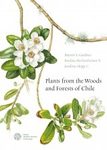![Flora de la República de Cuba, Series A: Plantas Vasculares, Fascículo 18 Flora de la República de Cuba, Series A: Plantas Vasculares, Fascículo 18]()
Click to have a closer look
About this book
Customer reviews
Related titles
About this book
Language: Spanish
Fascicle 18 treats the family Caesalpiniaceae, with a total of 16 genera and 88 species. Respectively 12 genera and 67 species are accepted as being indigenous to Cuba. Out of these, 24 species (36%) are considered endemic, as well as 6 of the 7 additional subspecies. There are considered to be 4 exotic genera are 4 and 21 exotic species, half of which (2 and 10, respectively) are considered naturalized, but the distinction between cultured, subspontaneous occurrence, and naturalization is not always strong. Some species are clearly invasive, whereas others have been considered to be invasive without conclusive evidence.
The text is based on a review of the family, published in 1999 and partially updated in 2007, which needed a comprehensive and critical review. We thank the author that despite the lack of access to herbaria and literature, and despite the difficulties of communication (thank Eddy Martínez for his help in overcoming them), she endeavored, where possible, to support the editors in their task. It was not always possible to consult as would have been desirable. The editors take responsibility for any errors that may inadvertently have been introduced. We hope that, in reorganizing the determination keys for large genera, we managed to make them more useful and reliable. This treatment is based on the study of almost 3000 herbarium specimens.
Summary in Spanish:
El fascículo 18 de la Flora de la República de Cuba abarca 200 páginas (incluso la parte introductoria). Comprende el tratamiento de la familia Caesalpiniaceae, con un total de 16 géneros y 88 especies. Los géneros aceptados como indígenas en Cuba son 12 y las especies 67, de las cuales 24 (36 %) se consideran endémicas, lo mismo que 6 de las 7 subespecies adicionales. Los géneros exóticos son 4 y las especies 21, cuya mitad (2 y 10, respectivamente) se consideran naturalizados; pero la distinción entre cultivo, ocurrencia subspontánea y naturalización no siempre es firme. Algunas especies son claramente invasoras, otras han sido así consideradas sin pruebas conclusivas.
El texto se basa en una revisión de la familia, publicada en 1999 y parcialmente actualizada en 2007, que sin embargo necesitaba de una revisión crítica y completa. Agradecemos a la autora que a pesar de carecer de acceso a los herbarios y a la literatura, y no obstante las dificultades de comunicación (agradecemos a Eddy Martínez por su ayuda en superarlas), se esforzó en lo posible a apoyar los redactores en su tarea. No siempre fue posible consultarla como hubiera sido deseable. Muchos cambios y complementos, incluso párrafos de texto completos (firmados [Red.]), carecen de su visto bueno. Los redactores asumimos la responsabilidad para errores eventuales que quizás introducimos por inadvertencia. Esperamos que, en reorganizar las claves de determinación para los grandes géneros, logramos a hacerlas más útiles y confiables. Este tratamiento se apoya en el estudio de casi 3000 especímenes de herbario.
Customer Reviews




















![Gramineas de Bolivia [Gramineas of Bolivia]](http://mediacdn.nhbs.com/jackets/jackets_resizer_medium/81/81508.jpg?height=150&width=94)








![Costa Rica: Tropical Flowers [English / Spanish]](http://mediacdn.nhbs.com/jackets/jackets_resizer_medium/19/195410.jpg?height=150&width=64)













